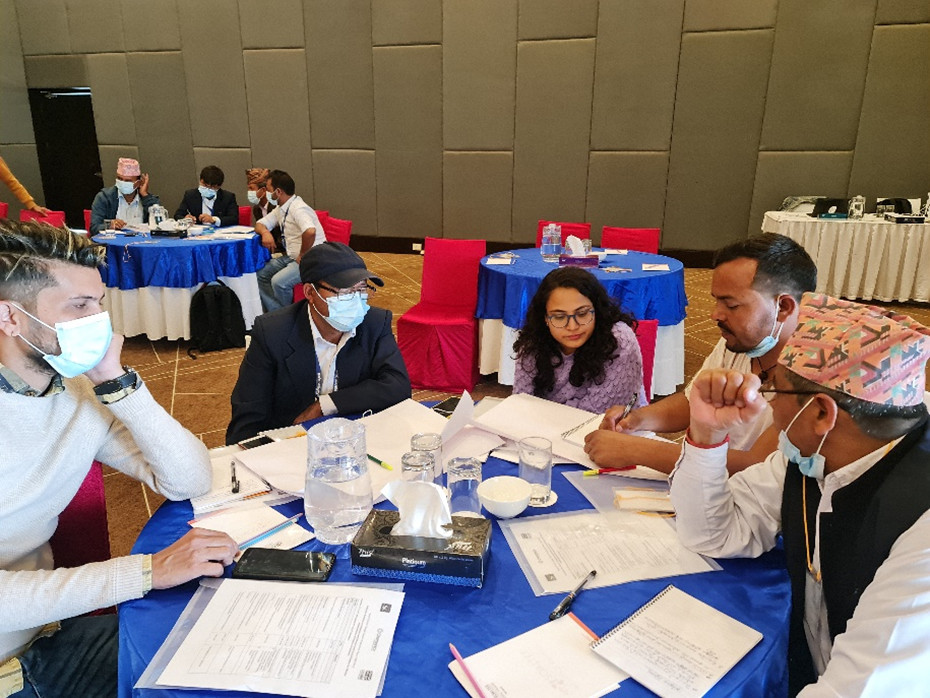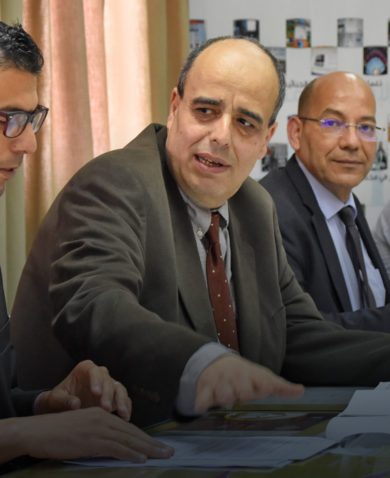
Why Building Strong Local Finance Skills and Systems is Key to Making Good on the Glasgow Climate Pact
March 10, 2022 | 4 Minute ReadCOP26 saw record levels of capital pledged toward combatting the effects of climate change in countries like Nepal. If the global community is to achieve shared climate goals, we must build up the people and systems responsible for turning those commitments into constructive action.
From reversing deforestation to phasing out inefficient fossil fuel subsidies, COP26’s commitments unlocked new pathways for the development community to spur climate action. However, the success of these financial and policy commitments depends on climate-vulnerable countries’ ability to attract and deploy climate finance effectively. Underdeveloped fund management systems and limited financial expertise are common roadblocks preventing climate finance from flowing through national governments to the communities that need them.
While the UNDP recently ranked Nepal 4th in the world for vulnerability to climate change, the country has yet to develop the financial and fiduciary management systems to effectively attract and steward climate finance. The government transitioned to a federal structure in 2015, creating a set of local governments with inadequate resources, technical knowledge, and management capacity necessary to handle climate finance properly. This lack of fund management expertise is not unique to Nepal; it is common among many climate-vulnerable countries.
What can development organizations do to overcome the challenge? The UK aid-funded Nepal Climate Change Support Programme II (NCCSP2) cultivates an enabling environment for climate investment and finance. The program oversees the construction of a robust, country-wide financial architecture and delivers training to local public servants to sustain and use this architecture. Climate-vulnerable countries will struggle to attract and utilize climate financing without such measures.
Establishing Safeguards to Attract Investment and Prevent Loss of Funds
Like many countries, Nepal lacks a well-established mechanism for managing climate capital. Traditionally, climate finance has been funded by donor institutions and implemented by international contractors, UN organizations, and INGOs. Each organization uses their own fund management systems, meaning that when their projects end, the mechanisms are withdrawn, creating a gap in the local government’s knowledge and systems. This multiplicity inhibits local ownership and sustainability and limits investment.
The lack of tested financial safeguards and inadequate fiduciary capacity represent the two principal risks to climate finance supply chains. If systems are not in place to properly verify and process payments, the possibility of mismanagement arises, preventing funds from being channeled to where they are needed. It is critical for Nepal, and other countries vulnerable to climate change, to build a secure funding pathway for climate donors.
Chemonics supports the Government of Nepal to build and maintain a system to manage their climate funds and verify payments. The system monitors and assesses any funds issued to local governments for climate-focused activities, preventing ineligible expenditure and wastage and ensuring procedural compliance. After the project closes, the government will have gained the institutional knowledge necessary to maintain the new system. This will ensure that accountability is kept within Nepal’s borders, moving the country towards self-sufficiency in combatting climate change.
Setting up a robust fund management mechanism improves the attractiveness of climate investment by decreasing financial risks, opening the door for potential new investments. It also helps ensure that invested capital moves efficiently to the climate projects that funding intends to support. The new system in Nepal is an important step towards developing an enabling environment for climate finance to flourish, driving the sustainable change necessary to meet the global climate agenda.
Training Local Governments to Manage Climate Finance Sustainably
Constructing efficient fund management systems and procedures is critical, but it is equally essential to ensure that systems are appropriately administered. Nepal’s newly formed local governments have little experience running such systems, as fund management has traditionally been the purview of external organizations. Recent assessments conducted by the Government of Nepal and World Bank highlighted the significant fiduciary risks Nepal’s federal structure presented to managing climate finance properly. By training public institutions in climate-vulnerable countries how to steward climate finance, projects like NCCSP2 can lay the foundations for the long-term solutions necessary to actualize the important objectives agreed at COP26.
In November 2021, an NCCSP2-run event in Nepalgunj brought together 26 chief administrative officers (CAOs), responsible for operational and financial matters in their respective municipalities, to discuss local climate finance procurement and compliance principles. Typically, CAOs have been excluded from high-level discussions, diminishing their exposure to information that would help them effectively support climate projects in their jurisdictions.
At the meeting, the CAOs developed and ratified a reform agenda related to compliance, procurement, and community representation. Due to be rolled out across municipalities in 2022, the reform agenda will act as a collective rulebook for local and provincial government bodies, helping to lay the groundwork for greater climate project efficiency.
Targeting local capacity gaps and elevating local voices are critical to creating fit-for-purpose climate finance systems. The workshop reiterated the importance of representation in designing and implementing climate initiatives that work. Without strong local institutions and an understanding of how climate affects different groups, we are unlikely to achieve the goals set out at COP26.

An Enabling Environment for COP26’s Climate Goals
NCCSP2’s approach offers an example to local or provincial governments working across the globe. Designing a robust climate finance management system reduces fiduciary risk, attracts investment, and creates a viable market for climate finance to flow beyond the lifecycle of donor-funded programs. Creating common systems and boosting fund management skills in low-income countries are critical ingredients in the world’s climate action strategy. These practical and necessary actions will, in many ways, help determine the legacy of global climate summits, such as Glasgow and Paris. Utilizing every penny of climate funding will be critical in the uphill battle to turn the tide on climate change and make good on climate targets.
Banner Image Caption: A drone shot of a river in a Himalayan valley, surrounded by few houses.
Posts on the blog represent the views of the authors and do not necessarily represent the views of Chemonics.




















































